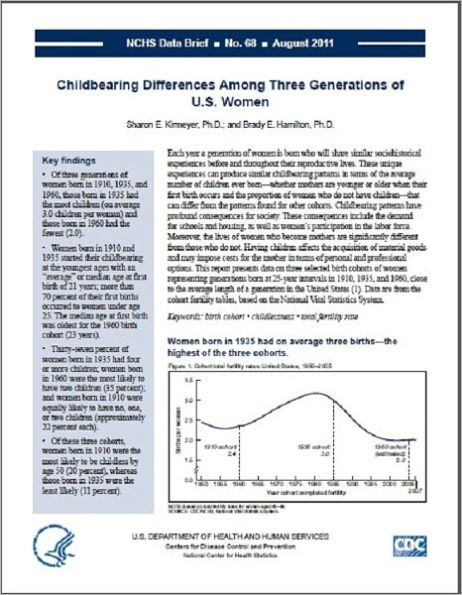Each year a generation of women is born who will share similar sociohistorical
experiences before and throughout their reproductive lives. These unique
experiences can produce similar childbearing patterns in terms of the average
number of children ever born—whether mothers are younger or older when their
first birth occurs and the proportion of women who do not have children—that
can differ from the patterns found for other cohorts. Childbearing patterns have
profound consequences for society. These consequences include the demand
for schools and housing, as well as women’s participation in the labor force.
Moreover, the lives of women who become mothers are significantly different
from those who do not. Having children affects the acquisition of material goods
and may impose costs for the mother in terms of personal and professional
options. This report presents data on three selected birth cohorts of women
representing generations born at 25-year intervals in 1910, 1935, and 1960, close
to the average length of a generation in the United States (1). Data are from the
cohort fertility tables, based on the National Vital Statistics System



